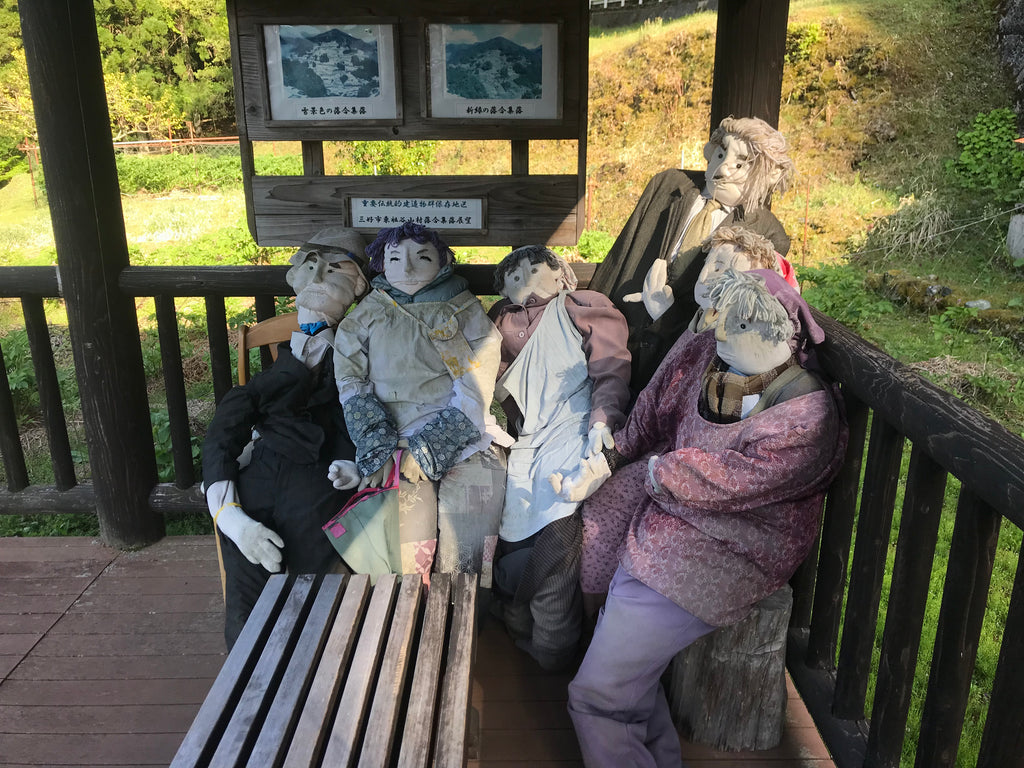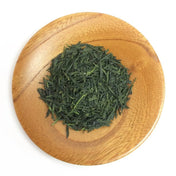Hello! Have you tried any of the 2023 shinchas at Yunomi?
The month of May (the time around the 88th night) is peak tea harvesting season in Japan. When one thinks of shincha, one probably envisions the typical Japanese sencha that is the conventional modern form of Japanese tea. Sencha with its vibrant green color, like the beautiful new lush greens (called shinryoku in Japanese) of this time.
Still, there are places throughout Japan where the traditional, oba-chan (i.e., grandma) style ways of tea-making still remain. One could call them folk teas, or some could even be called “phantom” teas as they are typically only enjoyed in that particular place and are nearly impossible for outsiders, let alone foreigners to buy. That is, they are not sold anywhere else! These oba-chan style teas belong to the lesser known bancha culture in Japan. To provide some examples that may be familiar to an international audience of tea connoisseurs, there is the Goishicha that is famous in Otoyo, Kochi Prefecture and the Awabancha that is well-known around the Kamikatsucho area in Tokushima Prefecture.
 Goishicha (left) and awabancha (right). Very different from your typical sencha leaves!
Goishicha (left) and awabancha (right). Very different from your typical sencha leaves!
These are both fermented teas that are enjoyed in the Shikoku area, although less well-known even to the typical Japanese person. Notably, instead of being harvested during the shincha season, these teas are actually picked closer to the summer time (i.e., goishicha harvest typically occurs mid-June to mid-July, awabancha is even later from late July to August) which is considered typical when making bancha. In fact, in the Shikoku area, there are actually myriads of unique regional teas (please see the Shikoku Tea Map by a tea friend, Josh Linvers below, which just highlights some of the teas on this Island). Today, we will just highlight one of these banchas.
 Shikoku Tea Map, courtesy of Josh Linvers (sommerier.com).
Shikoku Tea Map, courtesy of Josh Linvers (sommerier.com).
Iya Bancha, the “phantom” and luxurious bancha
An example of a place that holds pride in their phantom tea (i.e., tea is produced locally and consumed locally) is Iya, a remote, mountainous valley in the Northwestern part of Tokushima Prefecture in a region called Nishiawa. It is said that Iya has one of the steepest valleys in Japan and is located along the Iya river which flows from East to West. Without knowing about the Iya bancha that is produced in this area, we actually passed through this village (on our way to visit American tea farmer Yancy Lever in Kochi Prefecture) with the intention to take a look at the famous Ochiai steep slope village. Our original attraction was to look for millet, a historically important small grain grown where it was not possible to cultivate rice, since we had heard it was still being grown in the traditional way in this village.
The villages where people live are scattered on the upper part of the steep slope (Yes! One may be surprised that people actually live in such steeply sloped and remote areas but in Japan, there is even a TV program called "One lonely house”, featuring homes that are located in such remote places!). In an earlier post about the uniqueness of mountain grown tea, I touched on how tea grown in the mountains actually takes advantage of an ideal environment for tea production due to the large temperature differences between day and night, as well as the frequency of heavy fog. This is perhaps why tea grown in the Ochiai steep slope village also makes for high quality, delicious bancha!
The Iya valley reaches its peak for tea harvesting from the end of May to the beginning of June. In Iya, as well as in other mountain villages where tea is made for self-consumtion purposes, it has long been customary for neighbors to gather together to do farm work or help each other out with house repair and such. And so, it is common for a handful of neighbors to gather together to harvest tea together. Because the tea is hand-picked, the process can take two full days. When the work is done together with your neighbors however, it can be an enjoyable and fun process! Some people will carefully pick only tea leaves, others may prefer harvesting stems along with the tea leaves. Each household has their own preference and style.
When we stopped by Ochiai village, it was still too early for tea harvesting (i.e., mid-April). Still, we could spot some of the tea bushes that were mainly scattered about as they are for family production, as opposed to large scale tea production for business. Because these tea bushes are harvested by hand, we noticed these tea bushes are not hedge like rows trimmed like the tea bushes in some of the major tea producing areas but were managed as individual round bushes.
 View of the Ochiai steep slope village. Perhaps one needs a good eye, but tea bushes can be spotted even from the other side!
View of the Ochiai steep slope village. Perhaps one needs a good eye, but tea bushes can be spotted even from the other side!
 Life sized dolls have become quite common in this area (Ochiai village is very close to Nagoro, the village of dolls), we actually saw more dolls than people! These dolls are called kakashi or scarecrows in Japanese, their purpose is actually to combat loneliness rather than to protect produce.
Life sized dolls have become quite common in this area (Ochiai village is very close to Nagoro, the village of dolls), we actually saw more dolls than people! These dolls are called kakashi or scarecrows in Japanese, their purpose is actually to combat loneliness rather than to protect produce.
So, what happens after the fresh tea leaves are harvested (note: link will take you to a video of bancha making in the Iya Valley)? The harvested leaves will first go through a sorting process so that any bad tea leaves may be rejected. The tea leaves are then put into a large “kama” (iron cauldron) and roasted over burning firewood. The person(s) in charge of looking after the roasting tea leaves may stir the kama with a stick so that the tea leaves don’t get burned. Perhaps, one can imagine the pleasant earthy aroma that spreads all around once the tea leaves start to make sound from the heat! Subsequently, it is thoroughly kneaded by hand and then sun-dried for a few days.
Perhaps the standout feature of Iya bancha is the terroir it comes from (steep slope grown tea from a beautiful mountainous valley) and the fact that even today, everything is done meticulously by hand. From tea cultivation to harvesting, sorting, roasting, kneading, and drying! Doing a little bit of research about the Iya bancha made me remember my interview with tea farmer Yuuki Kayashita from Mitocha Tea Farm who is trying to preserve the traditional banchas in Japan in a more modern way. In Kayashita-san’s case, he utilizes the help of machinery.
The Iya bancha still continues to be made in the Iya valley through the wise hands of the elderly. Similar to other teas, every year, this special bancha is a little bit different depending on that year’s climate, the way it was roasted and massaged. It is time-consuming and luxurious. If I ever find myself in this village again, I hope I may have the opportunity to try the Iya bancha on the engawa, the traditional Japanese wood veranda.

In closing, while we did not come across the phantom Iya bancha, during our time in Ochiai village, we came across an elderly couple who we talked to about the traditional grains grown in that region. When I asked about tea, the elderly woman told me to wait a bit, she will grab some tea that they made and harvested from the Doyou no hi (mid-summer day) harvest. While the couple went on to converse a bit more about the tea, I had a bit of difficulty understanding due to their heavy dialect. The one part that I could decipher is that the tea is medicinal and especially good for when one has an upset stomach. So, maybe I came across a different phantom tea!? While I will never really know for sure, this heartwarming interaction made the visit worthwhile...
Featured image: In search for phantom tea, the Iya Bancha.
Have additional insights? Please don't hesitate to post comments and/or questions below. Or directly contact me (Moé Kishida): moe@yunomi.life. Thank you!


